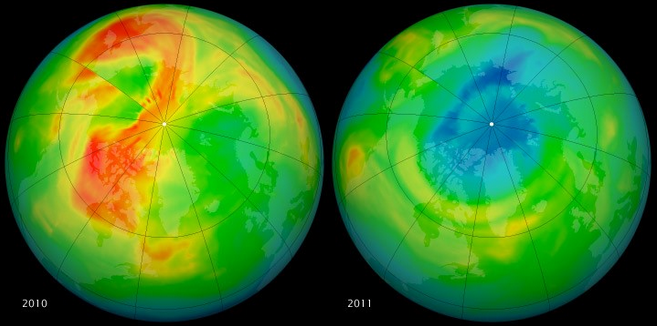The Overlooked Role of Stratospheric Ozone in forcing Northern Hemispheric climate (TORSO)
Stratospheric ozone plays a fundamental role in protecting the biosphere from harmful UV radiation. Human-induced emissions of ozone depleting substances (primarily chlorofluorocarbons, hydrochlorofluorocarbons and halons) over the 1970-1990 period have led to global-scale reductions in ozone abundances, and the formation of an ozone-hole in the Antarctic stratosphere during spring-time. While the influence of stratospheric ozone on tropospheric and surface climate has been extensively assessed in the context of the ozone hole in the Austral Hemisphere, large uncertainties remain for its effects on Northern Hemisphere surface climate. Moreover, the climate implications of ozone changes arising from increasing carbon dioxide concentrations have not been explored. This is primarily due to the poor representation of the coupling between ozone, circulation and climate in state-of-the-art climate models. This calls for a more rigorous assessment of the impact of ozone on stratosphere-troposphere coupling, and its role in climate and seasonal predictability in the Northern Hemisphere and more generally, on global climate.
The Ambizione project led by Dr. Gabriel Chiodo entitled “The Overlooked Role of Stratospheric Ozone in forcing Northern Hemispheric climate (TORSO)” (funded by the Swiss National Science Foundation with 920.000 CHF over a total of 4 years) aims to answer these questions by combining observational data and a hierarchy of models, offering an opportunity to assess the role of ozone in climate from sub-seasonal to multi-decadal time-scales. In particular, Gabriel and colleagues will explore the impact of ozone on the dynamical coupling between the stratosphere and troposphere, including influences on the predictability of the North Atlantic Oscillation (NAO), the dominant mode of climate variability in Europe. Moreover, the impact of multi-decadal trends in ozone (e.g. Arctic ozone recovery) on the storm-tracks in the North Atlantic will be evaluated, as well as role of ozone changes as a radiative feedback. In summary, this project will provide novel insights into the role of the ozone layer in the Earth system, through a process-based understanding of the feedbacks arising from ozone chemistry. In so doing, TORSO will bridge a gap in models participating in Intergovernmental Panel on Climate Change reports, thereby helping to guide future environmental policies.

As part of her PhD thesis, Marina Friedel is working on the mechanisms whereby ozone affects the circulation, such as zonal asymmetries in the distribution of Arctic ozone, as well as the impact of uncertainties in future ozone trends and their influence on projections of Northern hemisphere climate change.